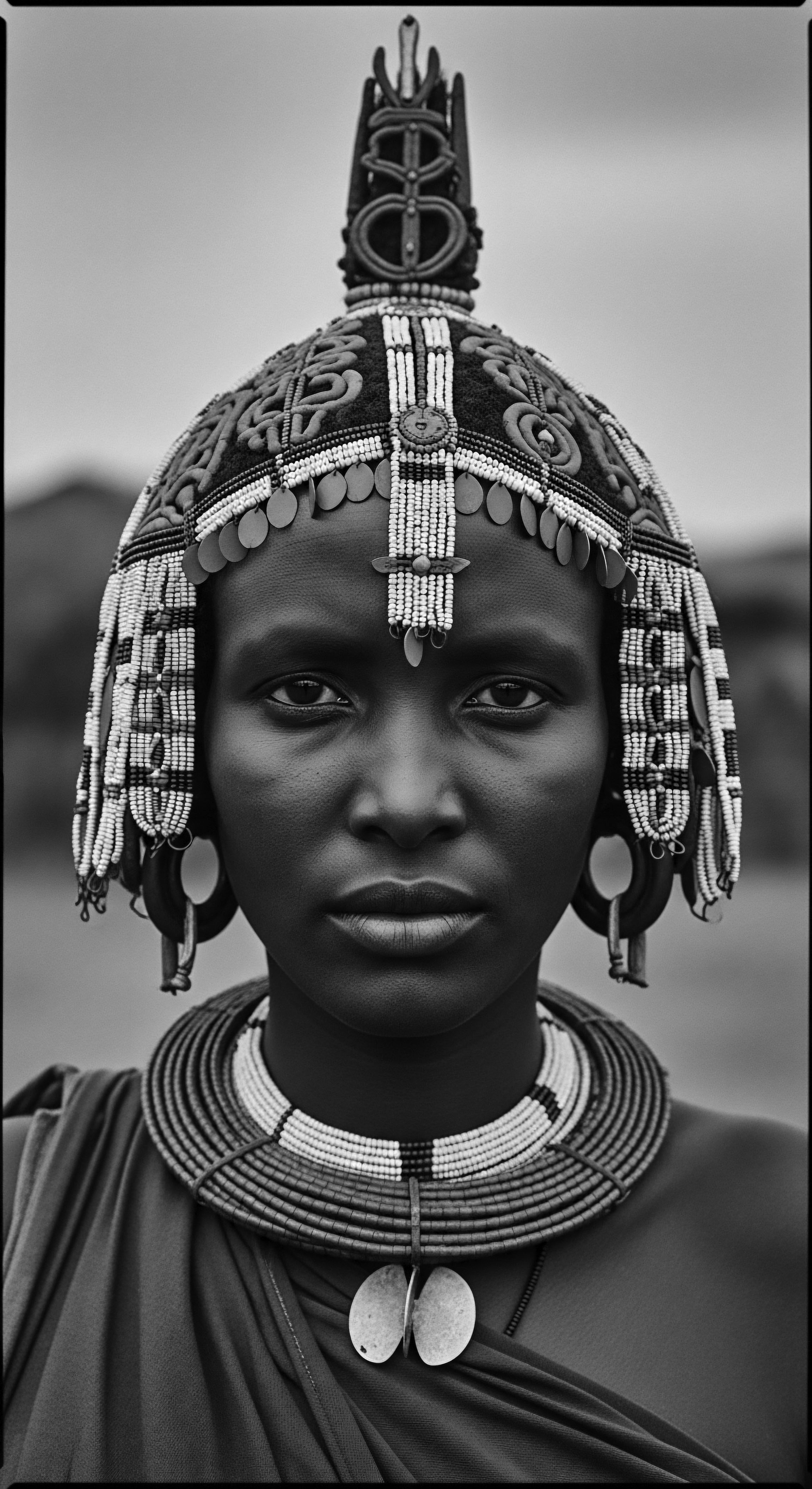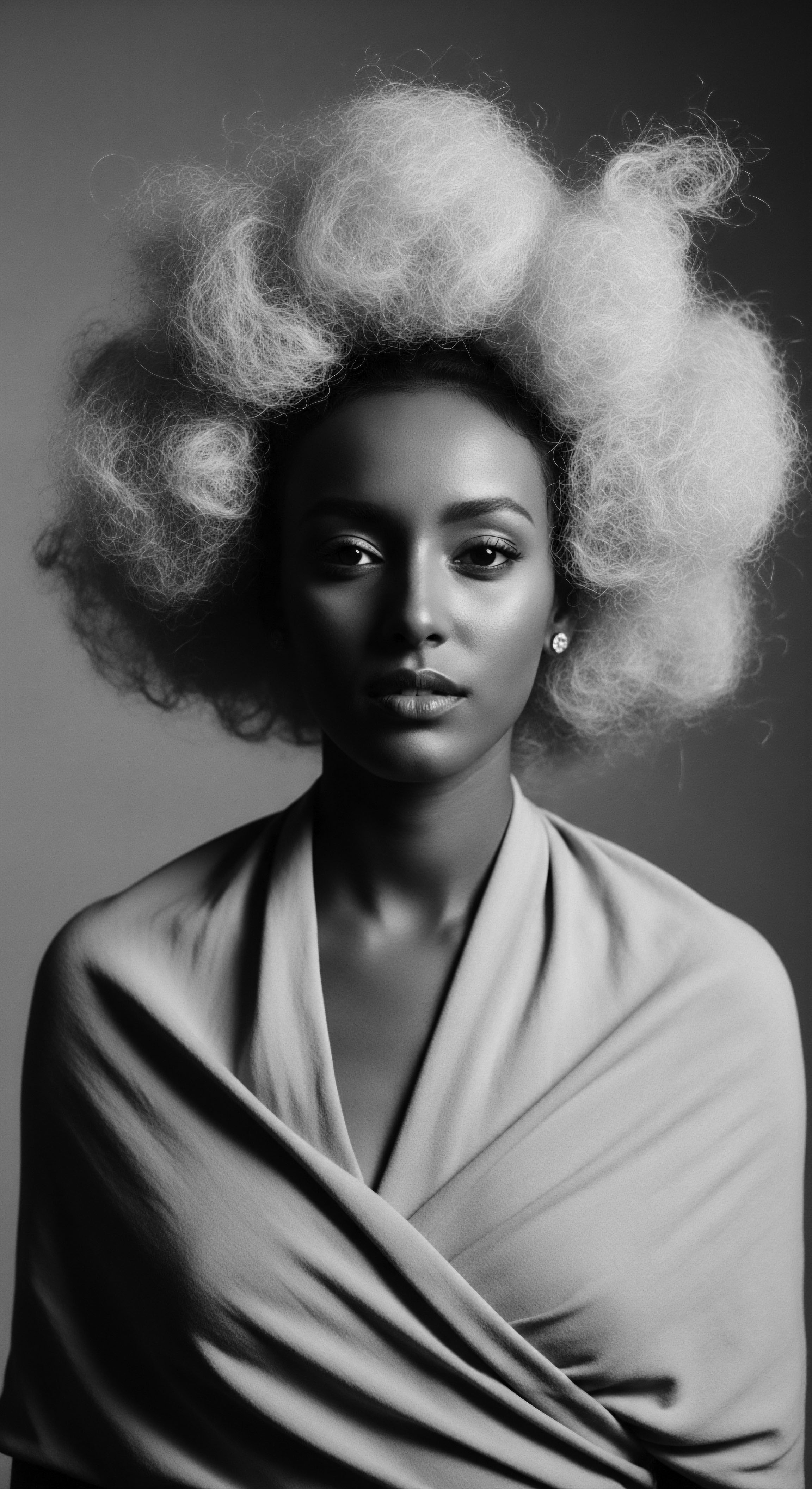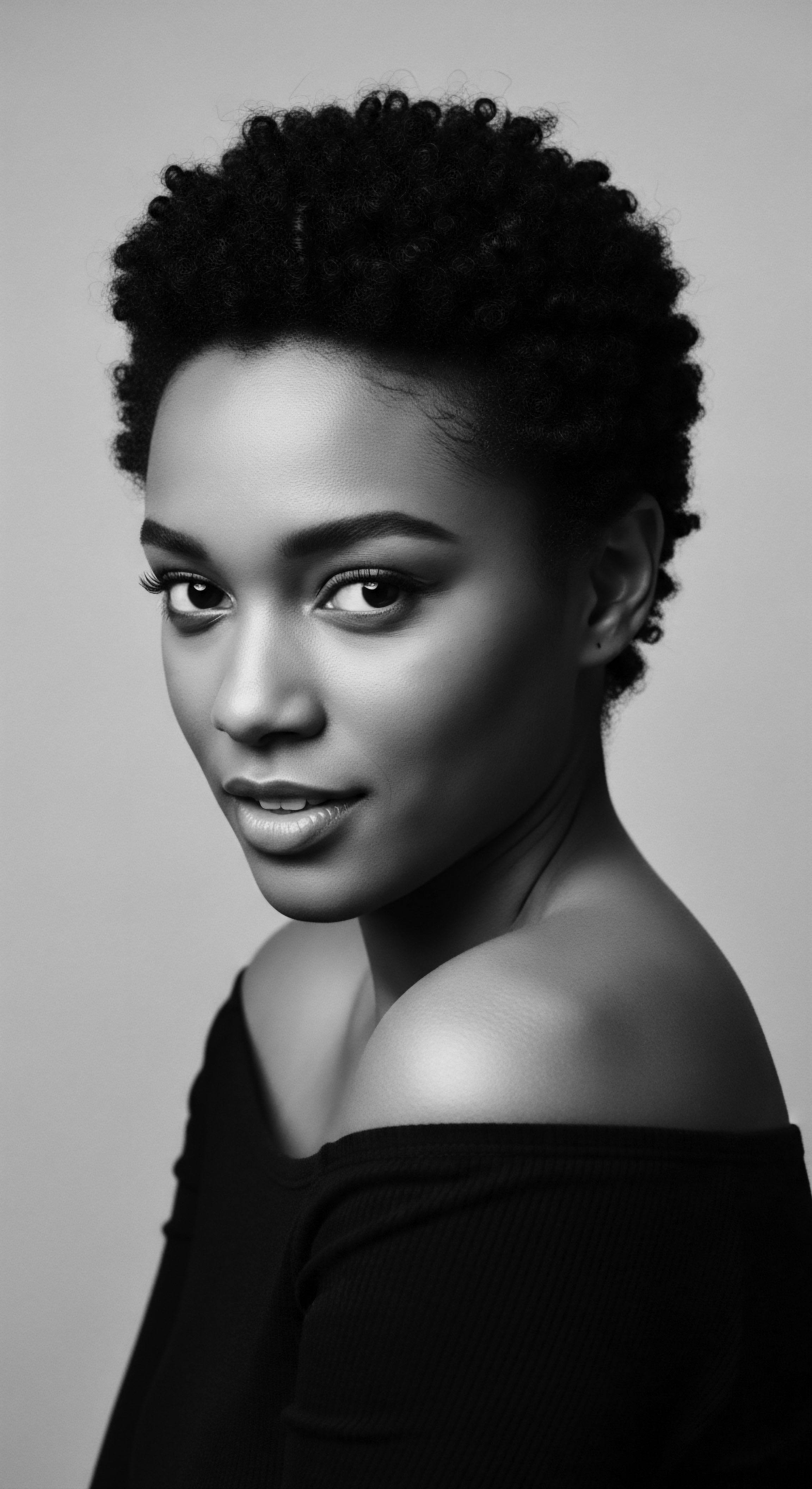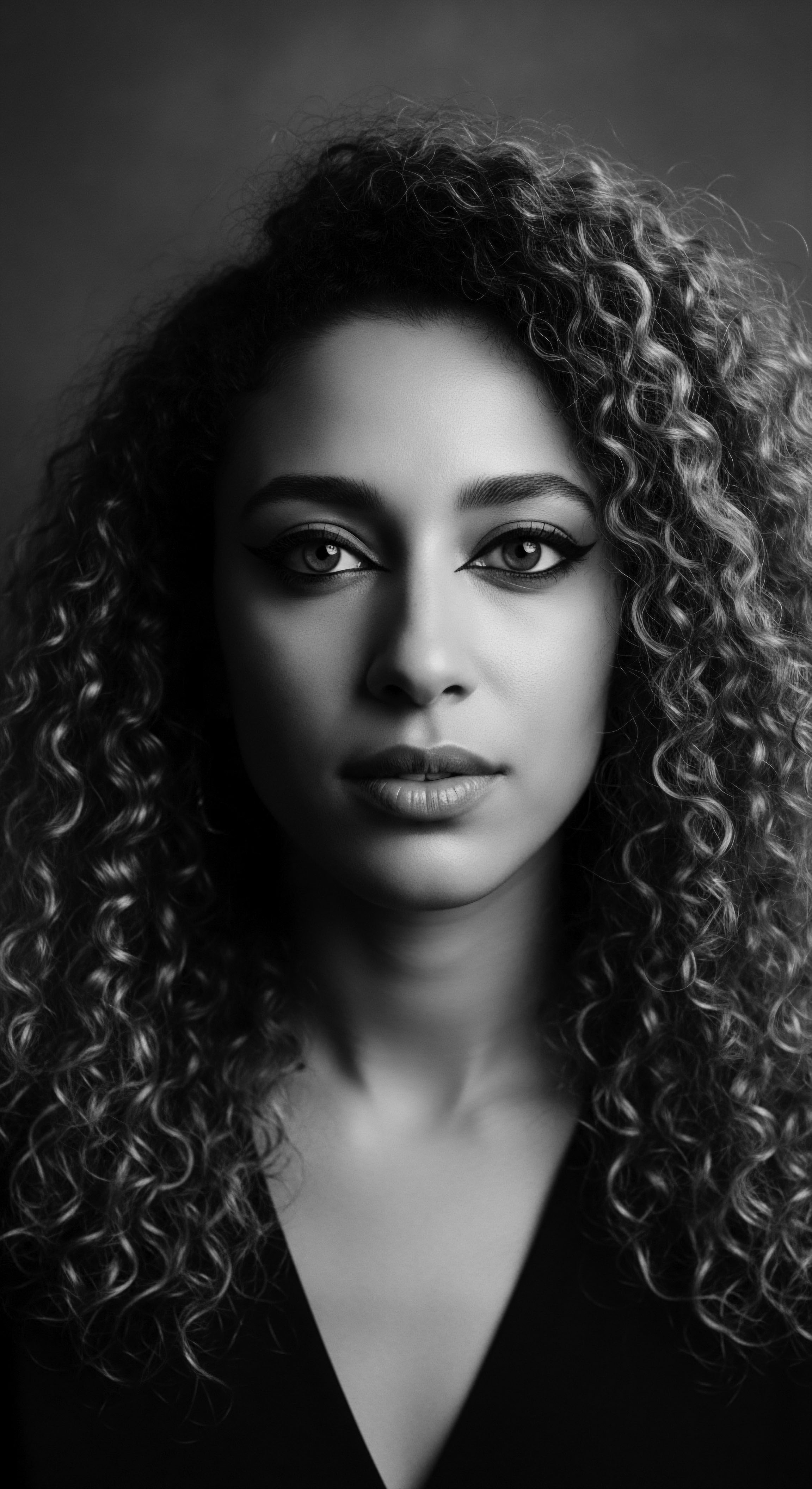Rhassoul clay, a geological gift from the ancient Atlas Mountains of Morocco, holds a profound historical relevance for textured hair, extending far beyond a simple cleansing agent. Its journey through centuries, intertwined with the lives of Amazigh women and the communal rituals of the hammam, speaks to a deeply rooted heritage of self-care, identity, and the enduring wisdom of natural elements. This humble clay, known for its unique mineral composition, served not only to purify the strands but also to connect individuals to a rich lineage of ancestral practices, providing a tangible link to the Earth itself.

Roots
Consider, for a moment, the feel of cool earth between your fingers, its soft give, its quiet strength. For generations, this elemental connection was not just metaphorical but a living practice, particularly concerning the care of hair. In North Africa, specifically within the sun-drenched valleys and craggy peaks of the Atlas Mountains, the story of rhassoul clay began, a story woven into the very being of textured hair.
This ancient mineral, also known as ghassoul, sourced from singular deposits in the Moulouya Valley, became a cornerstone of beauty and wellness for its inhabitants over a thousand years ago. The very name, derived from the Arabic “rassala,” meaning “to wash,” speaks volumes of its primary purpose and enduring legacy.
The geological genesis of rhassoul clay is a testament to the Earth’s slow, deliberate artistry. Formed from volcanic ash and altered over millions of years by geothermal forces, it represents a unique type of stevensite, particularly rich in minerals such as magnesium, silicon, potassium, and calcium. This particular mineral fingerprint sets it apart from other clays, granting it distinctive properties that proved invaluable for diverse hair types, especially those with coils, curls, and waves.
For communities where hair was a profound visual marker of identity, status, and familial ties, the care of these strands was far from superficial; it was a deeply cultural endeavor. Pre-colonial African societies, including the Amazigh (Berber) people of Morocco, considered hair a living archive, communicating aspects of one’s tribe, social standing, marital status, and spiritual connection. The ancestral understanding of hair was holistic, recognizing its link to overall well-being and its role in communal life.
Rhassoul clay, a gift from the Atlas Mountains, has for centuries served as an ancient touchstone for textured hair care, connecting its users to a profound heritage of natural cleansing and communal well-being.

Hair Anatomy and Physiology from an Ancestral and Scientific View
Understanding the intrinsic nature of textured hair, with its characteristic curl patterns and susceptibility to dryness, provides context for rhassoul clay’s ancestral appeal. The coiled structure of textured hair means natural oils from the scalp have a more challenging journey traversing the length of the strand. This often leads to a natural predisposition to dryness at the ends and a need for cleansing agents that purify without stripping vital moisture. Traditional practices understood this balance intuitively.
Rhassoul clay, with its gentle yet effective cleansing action, absorbs impurities and excess sebum without disturbing the scalp’s delicate balance, a stark contrast to harsh lye-based soaps that could leave hair brittle and parched. The clay’s negative charge attracts positively charged toxins and impurities, allowing them to be rinsed away, an early form of detoxification observed without modern scientific language.

How Did Traditional Knowledge Grasp Hair’s Needs?
The indigenous knowledge surrounding rhassoul clay did not rely on electron microscopes or chemical analyses. Instead, it was built upon generations of careful observation, trial, and inherited wisdom. The elders, particularly Amazigh women , learned through lived experience which plants, oils, and earth elements yielded beneficial results for their hair.
They recognized the softening and strengthening qualities the clay imparted, perhaps attributed to the minerals it contained. This experiential understanding formed a complex, informal pharmacopeia, passed down through mother-daughter lineages, preserving knowledge about optimal preparation and application.
The hair shaft, a complex protein structure, responds to its environment and the substances applied to it. Rhassoul clay, rich in silica and magnesium, offers benefits to both the hair and scalp. Silica contributes to hair strength and provides a gloss to the strands, while magnesium supports scalp health. These scientific validations now affirm the anecdotal evidence of centuries.

Textured Hair Classifications and Cultural Origins
While contemporary hair typing systems often categorize hair into numerical and alphabetical scales (e.g. 3A, 4C), ancestral societies often classified hair through cultural lenses. Hair was described by its appearance, its ability to hold styles, or its symbolic significance within a community. For the Amazigh people, intricate braids, often embellished with beads and metal jewelry, served to communicate social standing, age, or tribal identity.
These elaborate styles, such as the Taguemout from the Atlas Mountains or the Tawesna of the Sahara, required hair that was not only strong enough to withstand manipulation but also clean and supple enough to be worked into complex forms. Rhassoul clay helped achieve this foundational condition, providing a base for the artistry that followed.
The lexicon of textured hair in these historical contexts was deeply descriptive, often tied to function or visual cues. There was no need for a scientific classification when direct observation and communal knowledge guided practice.
- Taguemout ❉ An Amazigh hairstyle from the Atlas Mountains featuring multiple tight braids, often incorporating beads and coins.
- Tawesna ❉ A Sahara region style, characterized by braids decorated with beads and shells, signifying beauty and status.
- Chedda ❉ A traditional bridal hairstyle from the Rif Mountains, involving elaborate headdresses and jewelry to convey new status.
The use of rhassoul clay supported the health and manageability of hair, ensuring it remained amenable to these intricate expressions of heritage . This approach to hair care celebrated the hair’s natural state while preparing it for its social and cultural roles.

Ritual
The application of rhassoul clay to textured hair was rarely a solitary, utilitarian act. It was embedded within the broader framework of ritual, a purposeful sequence of actions imbued with meaning, often communal and deeply personal. The Moroccan hammam, a public bathhouse, stands as a prime example of this ritualistic approach to cleansing and self-care, where rhassoul clay played a central role for centuries. These spaces were more than just places to wash; they were social hubs, sites of generational wisdom exchange, and arenas for the preparation of body and spirit.
Within the steamy warmth of the hammam, rhassoul clay, mixed into a soft, silky paste with water, or sometimes rose water, would be applied to the hair and body. This preparation, often enriched with local herbs such as orange blossom, lavender, myrtle, or chamomile, transformed the clay into a holistic treatment that cleansed, purified, and softened the hair. The process itself became a moment of calm, a pause from daily life, allowing the minerals to work their gentle alchemy.
Beyond its cleansing capabilities, rhassoul clay’s application often formed a core component of deeply meaningful rituals, transforming hair care into an act of communal connection and personal reverence within settings like the Moroccan hammam.

Protective Styling Encyclopedia and Ancestral Roots
For textured hair, protective styling has long been a foundational practice for preserving length, minimizing breakage, and offering creative expression. These styles, which tuck away fragile ends and reduce daily manipulation, have ancient roots in African and diasporic communities. Rhassoul clay, by ensuring a clean, supple, and healthy scalp environment, supported the longevity and efficacy of these protective styles. A scalp free from excessive sebum and buildup provides a strong foundation for braids, twists, and various forms of intricate coiling, allowing the hair to rest and grow.
In many ancestral practices, the preparation of hair before styling was as important as the style itself. A properly cleansed and conditioned scalp meant less irritation under prolonged styles and better overall hair health. The clay, with its cleansing and conditioning attributes, contributed to hair that felt soft and manageable, making it easier to braid or twist without excessive pulling or stress on the strands.

How Did Clay Aid Traditional Hair Dressing?
Traditional hair dressing often involved hours of meticulous work, a communal activity shared among women, strengthening familial and community bonds. The clay, by making hair more pliable and less prone to tangles, could shorten this arduous process or at least make it more comfortable. When hair was properly prepared with rhassoul clay, it would allow artisans to execute complex designs with greater ease, ensuring the hair was smooth enough for intricate partings and tight, neat braids that held their form.
The removal of product buildup and environmental impurities by rhassoul clay was particularly significant for long-term protective styles. This ensured that the scalp could breathe, preventing issues that could compromise hair health under coverings or prolonged styling.
| Traditional Practice Communal Grooming Sessions |
| Rhassoul Clay's Contribution Prepared hair for intricate styling, fostering manageability. |
| Modern Parallel Group styling classes and social media hair tutorials. |
| Traditional Practice Pre-Styling Cleansing Rituals |
| Rhassoul Clay's Contribution Gently purified scalp and hair, preventing buildup under protective styles. |
| Modern Parallel Detoxifying scalp treatments before braids or weaves. |
| Traditional Practice Herb Infusions with Clay |
| Rhassoul Clay's Contribution Added botanical benefits, enhancing scalp and hair vitality. |
| Modern Parallel Formulating hair masks with essential oils and plant extracts. |
| Traditional Practice Handed-Down Wisdom |
| Rhassoul Clay's Contribution Recipes and techniques for clay use preserved through generations. |
| Modern Parallel Online communities sharing "holy grail" natural hair recipes. |
| Traditional Practice Rhassoul clay's historical role in traditional hair preparation mirrors contemporary desires for holistic, effective, and community-informed hair care. |

The Complete Textured Hair Toolkit
The tools of hair care in ancestral communities were often simple, yet effective. Fingers, combs carved from wood or bone, and natural fibers for braiding formed the basic kit. Rhassoul clay itself became a foundational tool, a natural cleanser that prepped the hair for whatever came next. It bypassed the need for harsh soaps or chemical agents, aligning with a broader worldview that privileged natural, earth-derived ingredients.
The application methods of rhassoul clay were often simple but deliberate. It would be mixed to a paste, sometimes thin, sometimes thick, depending on the specific hair need or cultural tradition. This paste would be massaged onto the scalp and hair, allowed to sit, and then rinsed thoroughly with water. The tactile experience of working the clay through the strands became part of the ritual, a connection to the material world and the wisdom it offered.
The versatility of this clay allowed for its inclusion in various aspects of hair care ❉ as a cleansing wash, a conditioning treatment, or even a scalp detoxifier. Its mineral content provided a unique cleansing action, absorbing excess oils and impurities without dehydrating the hair, a benefit that makes it still valued today. This natural cleansing property meant that traditional communities had access to a purifying agent that respected the hair’s delicate balance, a stark contrast to some modern detergents that can strip the hair bare.

Relay
The relevance of rhassoul clay extends beyond historical curiosity; it presents a living legacy, a relay of ancient wisdom into contemporary hair care for textured hair. This legacy speaks to how ancestral practices continue to inform and inspire holistic approaches to hair health, offering solutions rooted in deep ecological and cultural understanding. The mineral-rich earth from the Atlas Mountains, transported across continents and generations, continues its quiet work, offering its properties to modern individuals seeking a profound connection to their hair heritage.

Building Personalized Textured Hair Regimens Informed by Ancestral Wisdom
Modern textured hair care often emphasizes personalized regimens, recognizing the unique needs of diverse curl patterns, porosities, and densities. This concept, however, has deep ancestral echoes. Traditional communities did not adhere to a one-size-fits-all approach; instead, knowledge of specific herbs, oils, and earth elements like rhassoul clay was tailored to individual and communal needs, often informed by environmental factors or specific hair challenges. The consistency of the clay mixture might be adjusted based on desired cleansing strength or conditioning needs, much as modern individuals customize their clay masks.
The historical practice of blending rhassoul clay with other natural ingredients, such as rose water for hydration or various herbs for added benefits, speaks to an intuitive understanding of synergistic formulations. These additions transformed the clay from a simple cleanser into a multifaceted treatment, targeting specific concerns like dryness or scalp irritation. This ancestral methodology laid the groundwork for contemporary holistic hair care, which prioritizes natural ingredients and individualized routines.

How Did Rhassoul Clay Shape Ancient Hair Practices?
Rhassoul clay profoundly shaped ancient hair practices by providing a natural, accessible, and effective cleansing agent that supported the unique structure and needs of textured hair. Its ability to absorb impurities without harsh stripping meant it was a gentle yet thorough alternative to other cleansers, ensuring hair remained supple and strong for daily styling and ritualistic adornment. This allowed for the widespread adoption of routines that prioritized scalp health and hair integrity, elements fundamental to the elaborate and symbolic hairstyles prevalent in North African cultures. It also influenced the communal aspects of hair care, as families often prepared and used the clay together, reinforcing social bonds.

The Nighttime Sanctuary ❉ Bonnet Wisdom and Its Historical Basis
The wisdom of protecting hair during sleep, now widely practiced through bonnets, scarves, and satin pillowcases, also finds its resonance in ancestral practices, particularly for textured hair. While specific historical accounts detailing rhassoul clay’s direct role in nighttime rituals may be less documented than its cleansing uses, the principle of preservation was certainly present. Maintaining the integrity of hair after a cleansing and conditioning ritual with rhassoul clay would have been paramount to extend the benefits of the treatment and protect intricate styles.
The objective of nighttime protection is to reduce friction, retain moisture, and keep styles intact, thus minimizing manipulation and breakage. Given that rhassoul clay leaves hair softened and conditioned, it would have prepared the strands for protective coverings or simple wraps, ensuring that the hair remained pliable and less prone to tangles until the next wash day. This reflects a cyclical approach to hair care, where each step, from cleansing to protection, built upon the last to preserve hair health.

Ingredient Deep Dives for Textured Hair Needs
Rhassoul clay’s efficacy stems from its specific mineral composition, particularly its high levels of silica, magnesium, potassium, and calcium. These elements contribute to its remarkable properties:
- Magnesium Silicate ❉ Provides a soft, silky texture ideal for hair and skin applications, while strengthening the hair and scalp.
- Silica ❉ A component that helps cleanse the scalp, potentially acting as a mild exfoliant, and imparting a glossy sheen to hair.
- Absorptive Capacity ❉ The clay’s negative charge allows it to draw out positively charged impurities, excess oils, and toxins from the scalp and hair without stripping natural moisture.
- PH Balance ❉ Rhassoul clay contributes to maintaining the scalp’s pH balance, addressing issues like dryness and excessive oiliness, which can otherwise affect hair growth and comfort.
This blend of attributes makes rhassoul clay a versatile ingredient for textured hair, which benefits from gentle cleansing and conditioning to maintain its hydration and elasticity. Its ability to cleanse thoroughly while respecting the hair’s natural oils makes it particularly suited for coily and curly textures that are often prone to dryness with conventional shampoos.
Rhassoul clay continues its ancestral mission in modern regimens, offering its unique mineral profile to gently cleanse and condition textured hair, bridging ancient wisdom with contemporary care.

Textured Hair Problem Solving Compendium
Historically, rhassoul clay addressed several common hair concerns for textured hair. Its primary role as a cleanser helped manage issues related to excess sebum and scalp buildup, which can lead to discomfort or interfere with hair growth. For those with oily scalps, the clay’s oil-absorbing properties provided a natural way to control greasiness without stripping the hair entirely.
Furthermore, its gentle exfoliating action, attributed to silica, aided in removing dead skin cells and flakiness, potentially helping to alleviate dandruff. The mineral content also contributed to strengthening hair strands and reducing breakage, making hair appear healthier and more voluminous. These practical benefits reinforced its position as a staple in traditional hair care.
A specific historical example demonstrating the practical problem-solving power of rhassoul clay can be drawn from the traditional Moroccan Hammam. For centuries, this ritual served not just for cleanliness but also for therapeutic purposes. Women would apply the rhassoul paste to address skin ailments and hair conditions, relying on its purifying and soothing properties to relieve scalp irritation and deeply cleanse the hair. The practice was a communal act of healing and maintenance, underscoring the clay’s role in addressing concrete, everyday concerns related to hair and scalp health (Fatima’s Garden, 2023).

Holistic Influences on Hair Health
The use of rhassoul clay, particularly within the context of the hammam and other traditional North African beauty rituals, was part of a holistic wellness philosophy that considered the body, mind, and spirit as interconnected. Hair care was not isolated from general health; a vibrant head of hair was seen as a reflection of internal balance and vitality. This aligns with broader African cultural perspectives where hair held significant symbolic meaning, linked to a person’s identity, community, and even spiritual connections.
The act of applying the clay, often with aromatic waters and herbs, provided a sensory experience that promoted relaxation and well-being. This ritualistic aspect contributed to mental calm, which, in turn, supports overall physical health, including the health of the hair. The traditional belief in clay’s purifying and healing properties extended beyond the physical, encompassing a sense of renewal and connection to ancestral practices.
The simple, natural origin of rhassoul clay, extracted from the earth and dried by the sun, underscores a sustainable and respectful relationship with natural resources, a principle that echoes in contemporary clean beauty movements. This continuity of practice illustrates the enduring wisdom of drawing from the earth for true wellness, making rhassoul clay a powerful symbol of textured hair heritage.

Reflection
The narrative of rhassoul clay and its enduring connection to textured hair stretches far beyond mere historical footnotes. It represents a profound meditation on the heritage of care, a living archive breathed into existence by the hands and wisdom of those who walked before us. From the elemental biology of the Atlas Mountains, where this ancient earth found its unique voice, to the intimate communal rhythms of the hammam, where it nourished strands and souls alike, rhassoul clay stands as a resilient symbol. It reminds us that our hair is not just a biological marvel but a deeply cultural expression, a conduit to the past, and a canvas for our present identity.
This unassuming clay, steeped in generations of Amazigh knowledge, speaks to the power of intuitive wisdom, a wisdom that understood the need for gentle cleansing, deep conditioning, and the protective embrace of natural elements long before scientific terms articulated their mechanisms. Each application, whether in an ancient ritual or a modern regimen, becomes a quiet reaffirmation of a vibrant, unbreakable lineage, truly embodying the ‘Soul of a Strand’—a legacy of strength, beauty, and authentic selfhood, forever rooted in earth’s gentle embrace.

References
- Becker, Cynthia. “Amazigh Women’s Arts ❉ Visual Expressions of Berber Identity.” Lecture, Boston University, 2006.
- Chahi, A. et al. “Geochemistry and Mineralogy of the Ghassoul Clay Deposit (Morocco).” Clay Minerals, 1997.
- El Fadeli, S. et al. “Ethnomedicinal, Phytochemical, and Pharmacological Aspects of Moroccan Rhassoul Clay.” Journal of Ethnopharmacology, 2010.
- Faustini, M. et al. “Hair Care Cosmetics ❉ From Traditional Shampoo to Solid Clay and Herbal Shampoo, A Review.” Heliyon, 2018.
- Lekouch, N. A. Sedki, A. Nejmeddine, S. Gamon. “The Science of the Total Environment, 280, 39-43.” The Science of the Total Environment, 2001.
- Matike, D.M.E. Ekosse, G.I. & Ngole, V.M. “Indigenous Knowledge Applied to the Use of Clays for Cosmetic Purposes in Africa ❉ An Overview.” Indilinga ❉ African Journal of Indigenous Knowledge Systems, 2010.
- Omotos, Adetutu. “The Cultural and Historical Significance of African Hairstyles.” Journal of Pan African Studies, 2018.
- Robert, M. et al. “Smectites and Hair Treatment.” Journal of Colloid and Interface Science, 1984.
- Tokarský, J. “Ghassoul – Moroccan Clay with Excellent Adsorption Properties.” Materials Today ❉ Proceedings, 2018.
